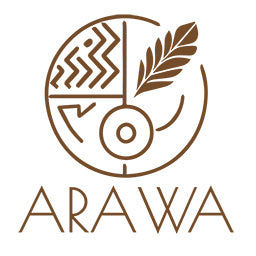Arawak People
The Arawak people, including the Wayuu, have a vibrant tradition of community, storytelling, and artistic expression rooted in Indigenous Caribbean and South American culture. Weaving is central to their identity, with Wayuu women learning traditional techniques passed down through generations, often inspired by legends such as the spider deity Wale'kerü.

Arawak Handmade Tradition
- Arawak crafts include pottery, stone carving, basketry, calabash work, and fiber arts.
- Weaving is a core tradition passed down through generations; women learn to weave cotton into hammocks, ceremonial belts, and clothing from a young age.
- Artisans use natural materials—river clay for pots, tree fibers for barkcloth, and plant dyes for color—which carry spiritual and communal meanings.
Wayuu Bag Creation
- Wayuu women master weaving as a rite of passage and source of pride, with legends crediting a mythical spider for teaching their ancestors the art of crafting bags and hammocks.
- Each Wayuu bag is handmade using a crochet technique, with intricate patterns inspired by nature and daily life.
- The creation process is highly detailed: it starts with sourcing and spinning cotton or synthetic threads, dyeing them, and crocheting the bag using special needles.
- Making a single Bag can take weeks and involves storytelling through color choices and motifs, making every piece unique.
- This craft is central to the Wayuu economy and cultural identity, symbolizing creativity and wisdom within the community.
Cultural Importance
- The weaving and Bags are not just functional; they encode stories, cosmological beliefs, and personal qualities of the makers.
- Artisan goods like Wayuu Bags help preserve Arawak heritage and provide essential income for indigenous communities.
The Arawak people's handmade tradition, especially through the Wayuu Bags, is a striking testament to their creative legacy and enduring cultural resilience.
